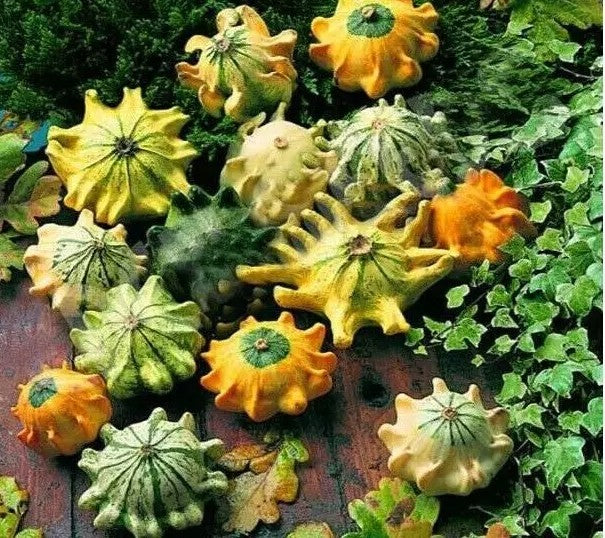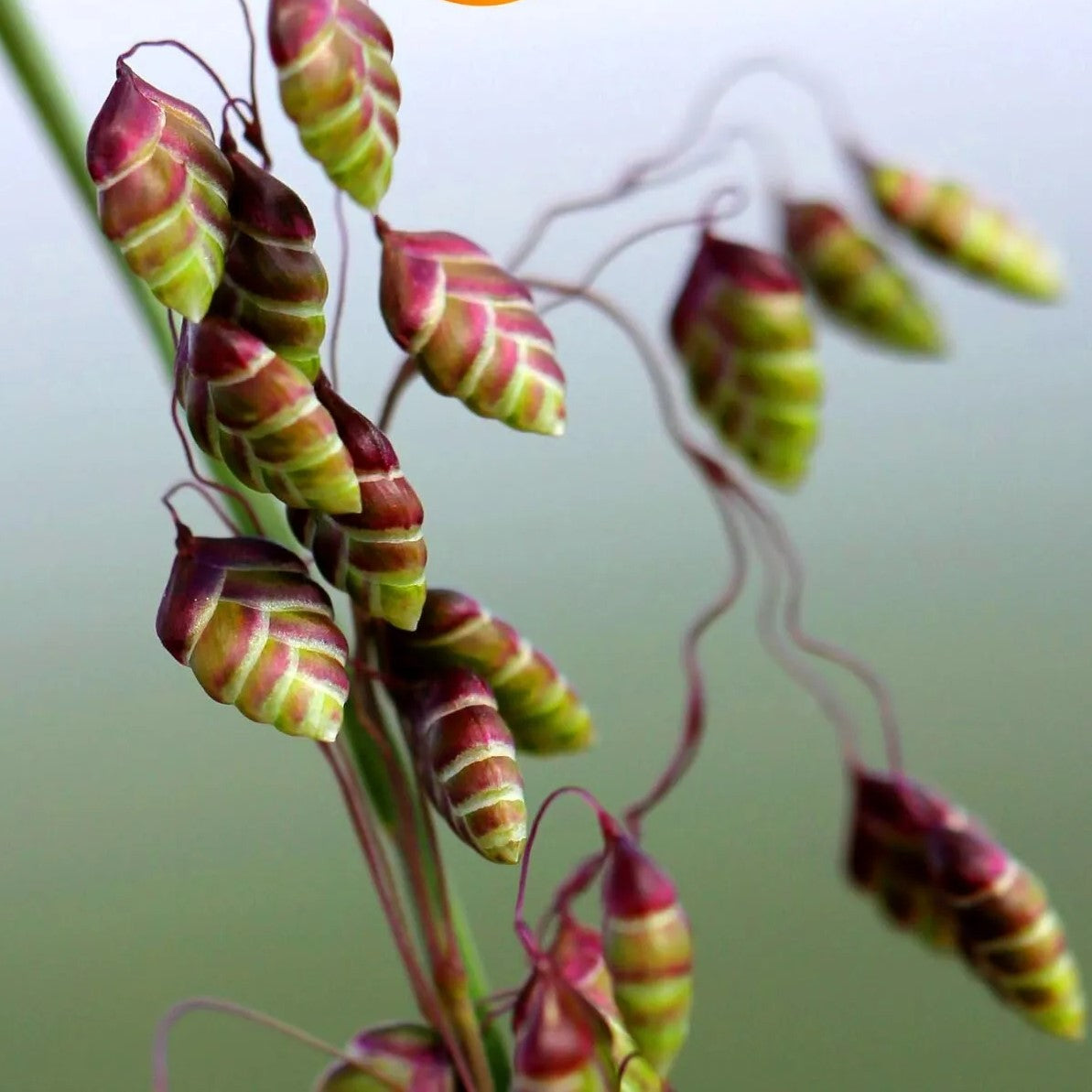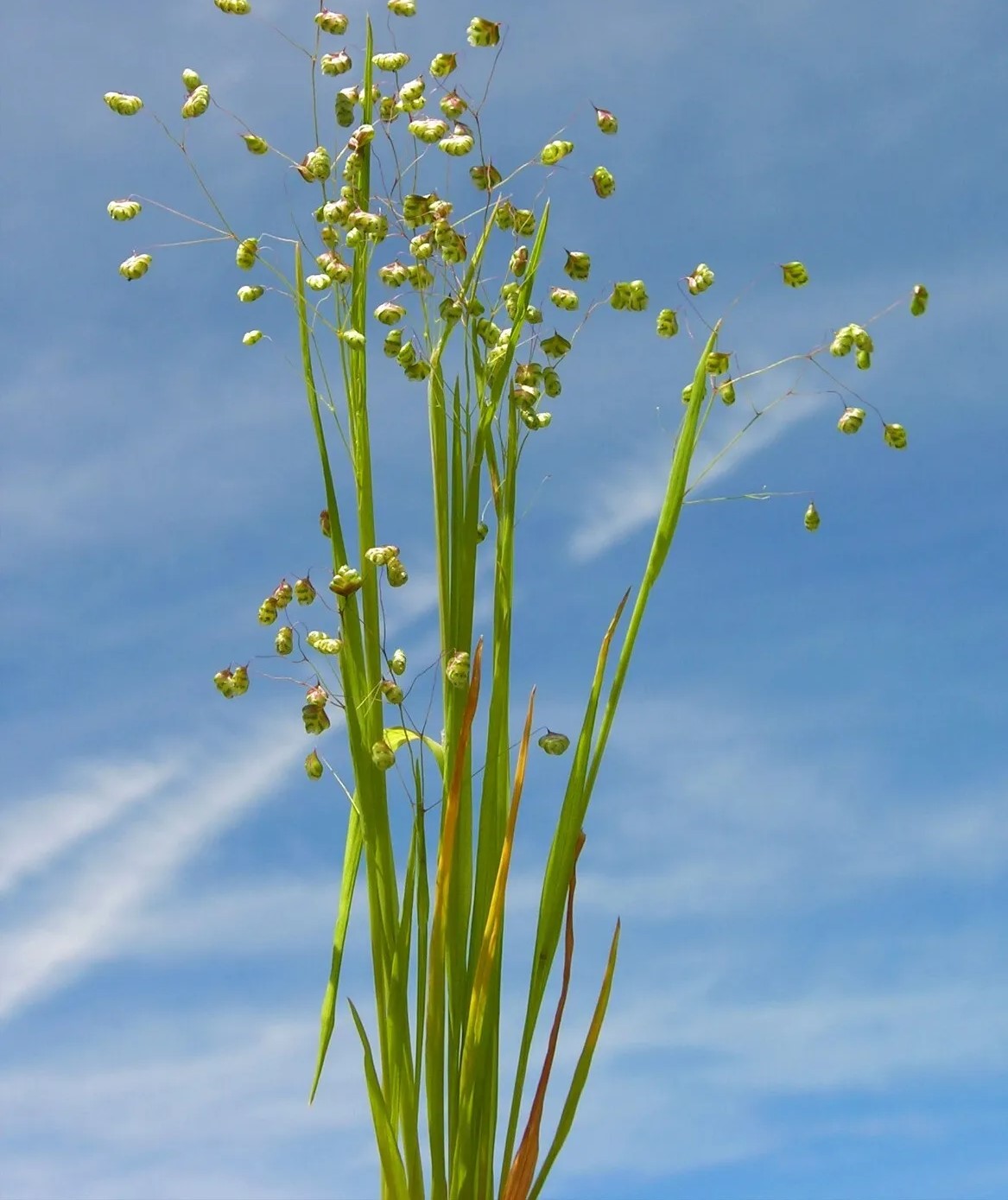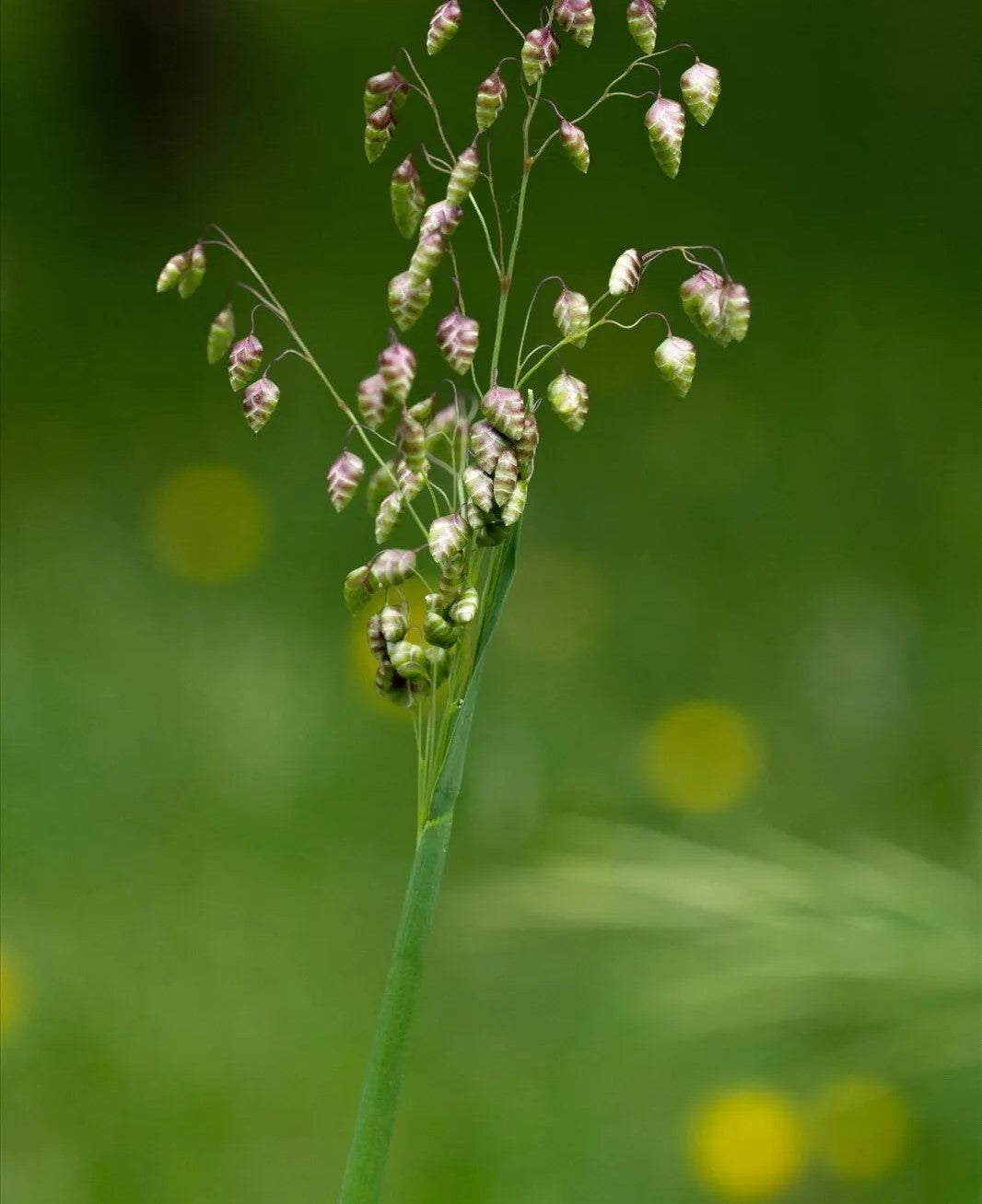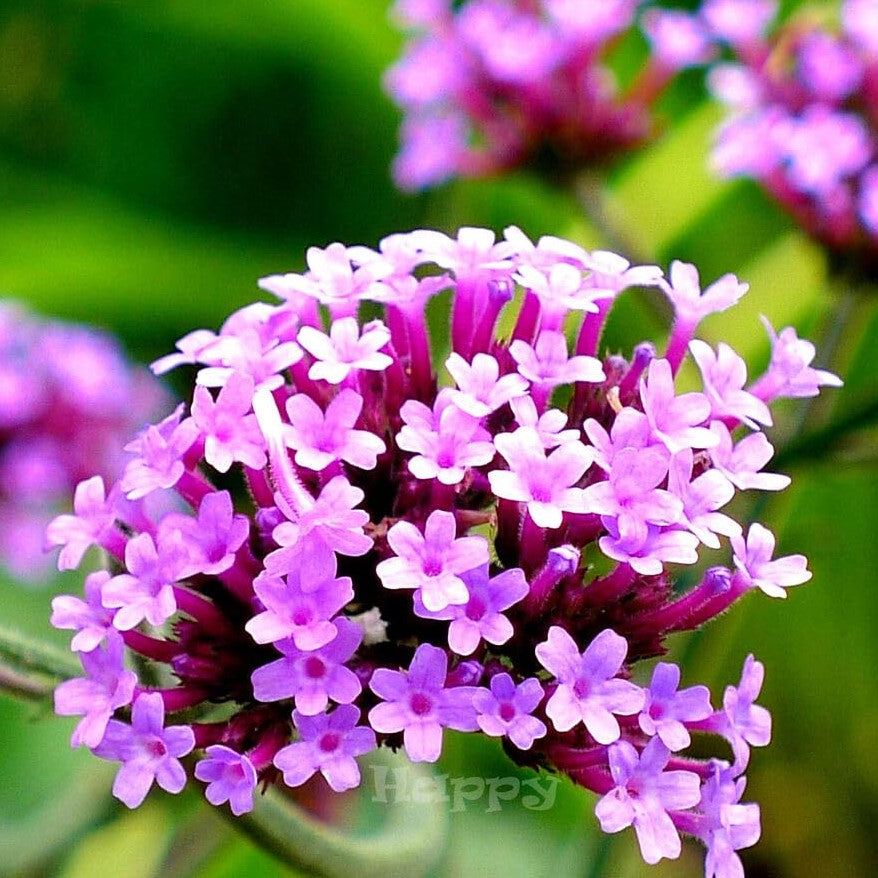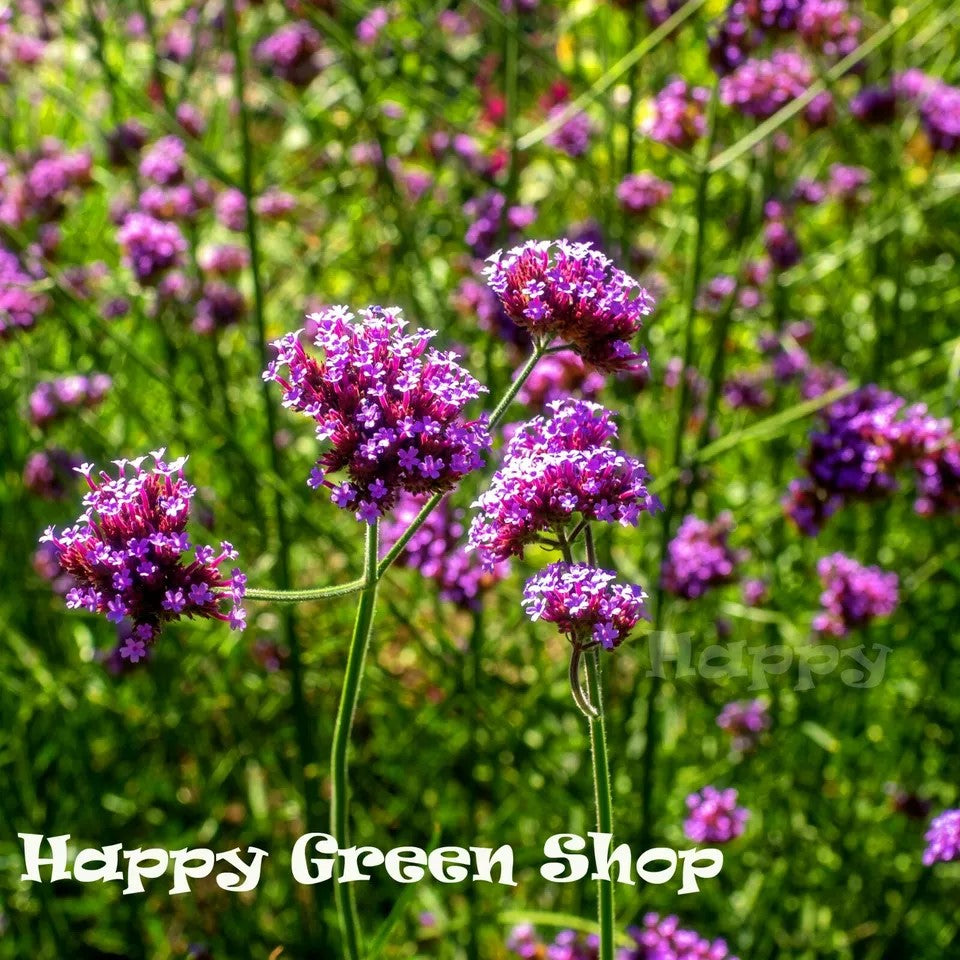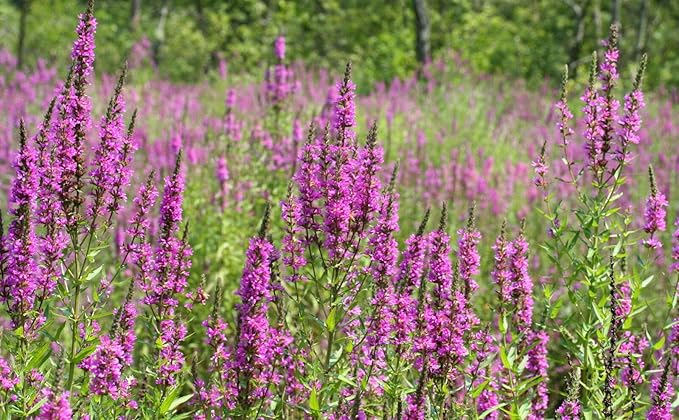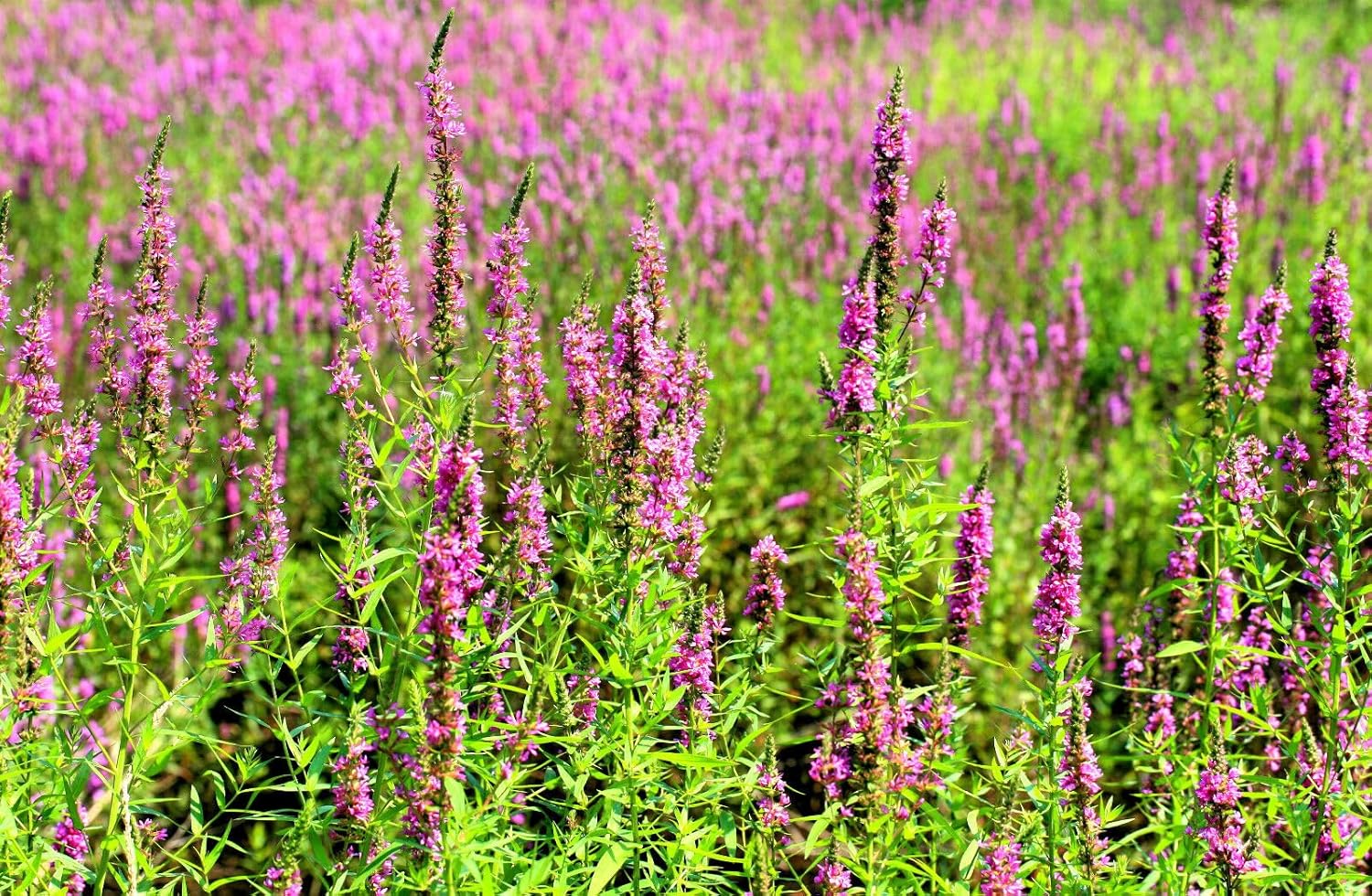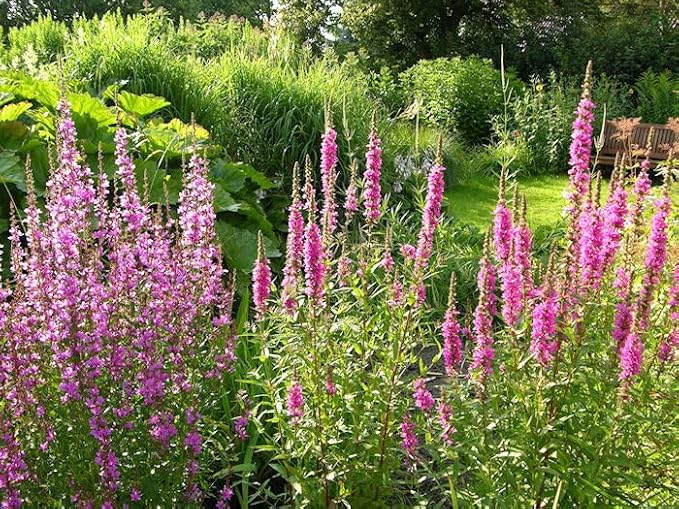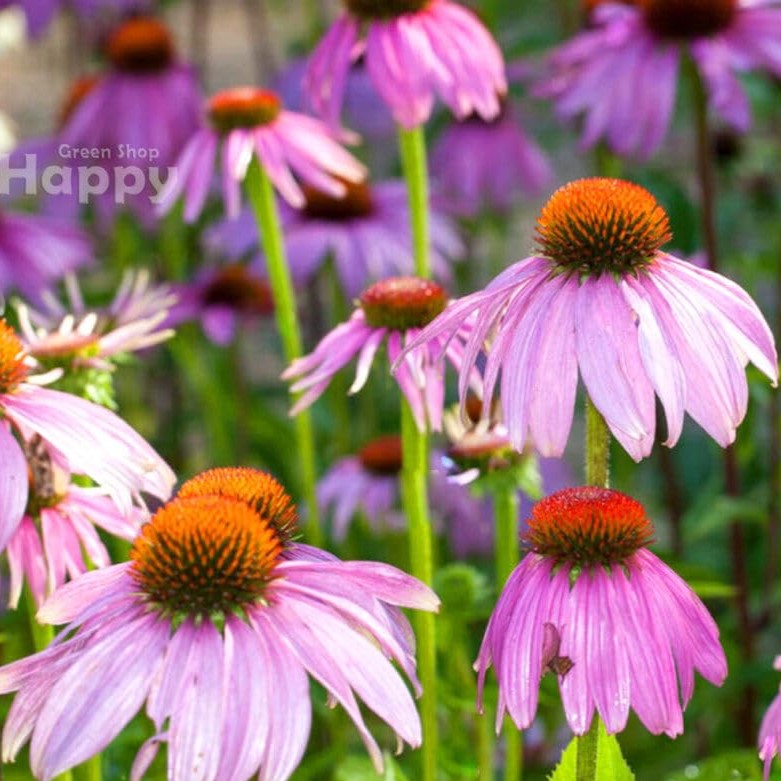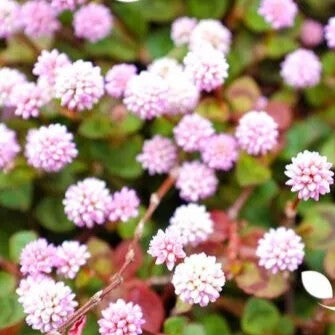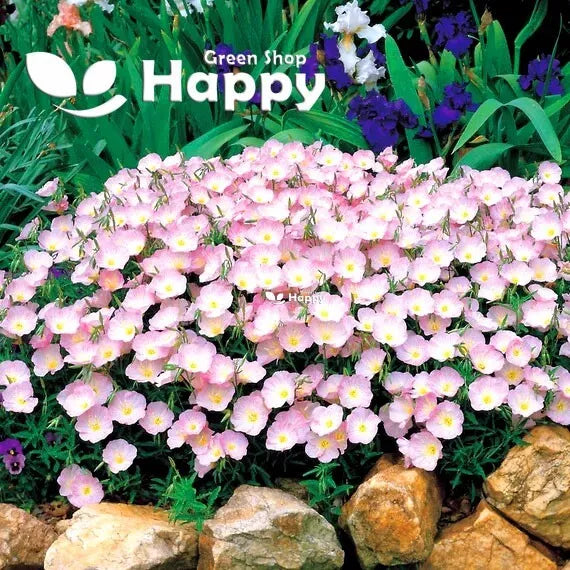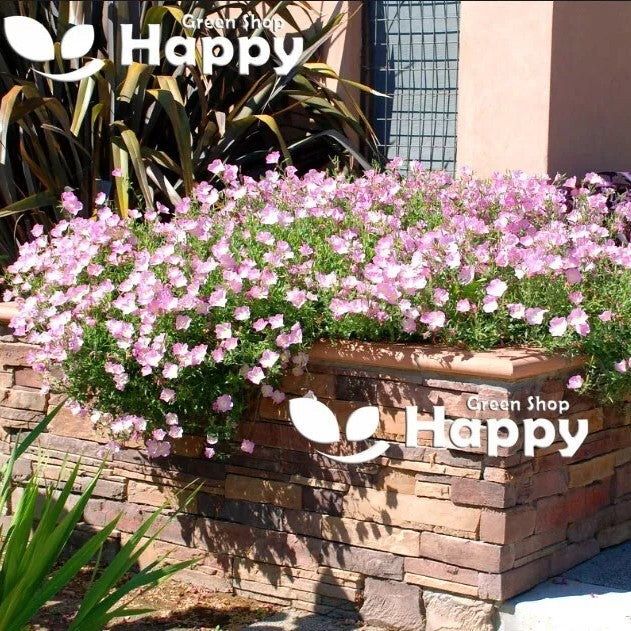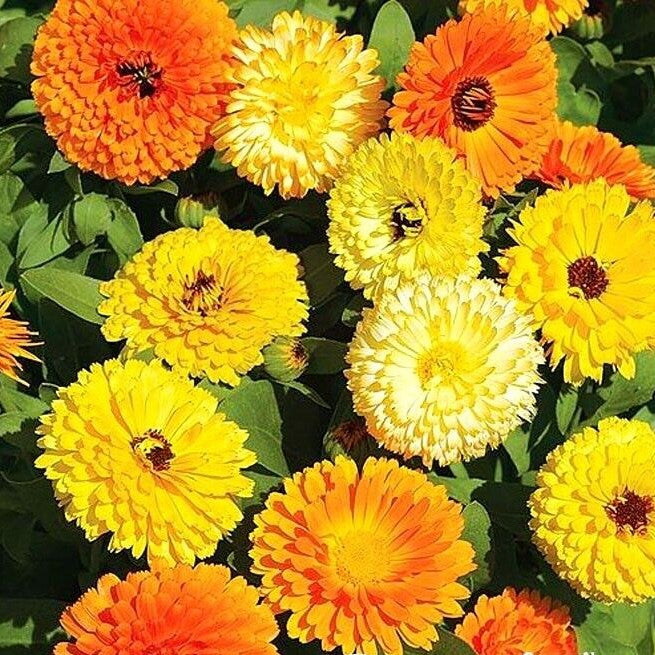Sort by:
351 products
351 products
Quaking Grass Seeds (Briza minor)
Quaking Grass is a delicate, annual ornamental grass with airy, heart-shaped seed heads that tremble and shimmer in the breeze. Its fine texture and graceful movement add charm to borders, wildflower meadows, and container plantings. Easy to grow, it also makes attractive cut or dried arrangements.
What Makes It Special
-
Light, quivering heart-shaped seed heads
-
Adds texture and movement to gardens
-
Excellent for cut flowers and dried arrangements
Key Features
-
Botanical name: Briza minor
-
Hardy annual
-
Height: 30–50 cm (12–20 in)
-
Bloom time: Summer
Ideal For
-
Cottage gardens, borders, and wildflower meadows
-
Containers and pots
-
Fresh or dried flower arrangements
Sowing
-
Sow outdoors Mar–May or Sep–Oct
-
Lightly press seeds into soil; do not cover heavily
-
Germination: 10–21 days at 15–20°C
-
Thin seedlings 15–20 cm apart
-
Flowers in the same year
Purpletop Vervain – Seeds
(Verbena bonariensis)
Purpletop Vervain is a tall, airy perennial that produces clusters of vibrant purple flowers atop slender stems. Its long flowering period and graceful form make it ideal for borders, cottage gardens, and pollinator-friendly landscapes. Loved by butterflies and bees, it adds height, color, and elegance to any garden.
Why Grow Purpletop Vervain?
-
Clusters of vibrant purple flowers on tall stems
-
Long-flowering perennial, easy to grow
-
Attracts butterflies and bees
-
Adds height and elegance to borders and cottage gardens
Key Features
-
Type: Perennial
-
Height: 90–150 cm
-
Flowers: Summer to autumn
-
Position: Full sun
-
Soil: Well-drained, moderately fertile
Ideal For
-
Cottage and mixed borders
-
Pollinator-friendly gardens
-
Cut flowers and floral displays
-
Adding height and color to flower beds
Sowing & Growing
-
Sow indoors: February–April in seed trays
-
Sow outdoors: April–May directly in prepared soil
-
Germination: 10–20 days at 18–20°C
-
Spacing: 30–40 cm apart
-
Care: Low maintenance; deadhead to prolong flowering
Purple Loosestrife Seeds (Lythrum salicaria)
A striking perennial, Purple Loosestrife produces tall spikes of vibrant purple flowers throughout summer. Hardy and long-flowering, it adds vertical interest and color to borders, wetlands, and naturalistic garden plantings, attracting bees and butterflies.
What Makes It Special
-
Tall spikes of vivid purple flowers
-
Hardy, long-lasting perennial with dramatic vertical presence
-
Attracts pollinators, supporting wildlife-friendly gardens
Key Features
-
Botanical name: Lythrum salicaria
-
Hardy perennial
-
Height: 100–150 cm (3–5 ft)
-
Bloom time: Summer
Ideal For
-
Garden borders and wetland-style plantings
-
Naturalistic and cottage-style gardens
-
Pollinator-friendly landscapes
Sowing
-
Sow indoors Feb–Apr or outdoors Mar–May
-
Cover lightly with soil and keep moist
-
Germination: 14–28 days at 15–20°C
-
Thin seedlings 30–40 cm apart
-
Flowers in the first or second season after sowing
Purple Coneflower 'Starlight' – Seeds
(Echinacea purpurea)
Purple Coneflower 'Starlight' is a hardy perennial known for its striking lavender-purple petals surrounding a prominent orange-brown central cone. Its long-lasting blooms attract pollinators like bees and butterflies, while its robust, upright growth makes it a standout in borders, wildflower meadows, and perennial gardens. This variety is low-maintenance and drought-tolerant, perfect for sustainable planting.
Key Features
-
Type: Perennial
-
Height: 60–90 cm
-
Spread: 40–50 cm
-
Flowering: July–September
-
Position: Full sun to partial shade
-
Soil: Well-drained, moderately fertile
Ideal For
-
Perennial borders and cottage gardens
-
Pollinator-friendly planting
-
Cut flower arrangements
-
Naturalized or meadow-style gardens
Sowing & Growing
-
Sow indoors: February–April at 18–22°C
-
Sow outdoors: April–May, directly in soil
-
Germination: 14–21 days
-
Thin seedlings to 40–50 cm apart
-
Mulch and water moderately; low-maintenance once established
Punching Balls Pink – Seeds (Polygonum capitatum)
Punching Balls Pink (Polygonum capitatum) is a charming perennial known for its dense, globe-shaped clusters of vibrant pink flowers. Blooming from late spring to early autumn, it creates a colorful, eye-catching display in borders, rockeries, and cottage gardens. Low-maintenance and easy to grow, this variety attracts pollinators and adds a bold, textured element to any garden space.
Why Grow "Punching Balls Pink"
-
Globe-shaped clusters of bright pink flowers
-
Long flowering season from late spring to early autumn
-
Hardy, low-maintenance perennial
-
Pollinator-friendly and visually striking
Key Features
-
Type: Perennial (Polygonum capitatum)
-
Height: 40–60 cm
-
Flowering: Late spring to early autumn
-
Position: Full sun to partial shade
-
Uses: Borders, rockeries, cottage gardens, pollinator-friendly planting
Ideal For
-
Bold, textured garden displays
-
Borders and rockeries
-
Cottage-style gardens
-
Pollinator-friendly planting schemes
Sowing & Growing
-
Sow indoors: February–April in trays or pots
-
Sow outdoors: April–May after frost
-
Germination: 10–20 days at 18–22°C
-
Thin seedlings 30–40 cm apart
-
Prefers well-drained soil in full sun to partial shade
-
Water moderately until established
Princely Aster Mix – Tall, Elegant, and Perfect for Cutting
Princely Aster Mix produces tall, sturdy plants with large, fully double blooms in a regal array of colors including pink, purple, red, and white. Flowering from late summer into autumn, these asters are a favorite for cutting gardens and bold displays, adding height, color, and elegance to borders.
What Makes It Special
-
Large, fully double blooms in a rich color mix
-
Tall stems ideal for cut flower arrangements
-
Long flowering season into autumn
-
Excellent for adding height to borders
-
Strong, sturdy plants with long vase life
Key Features
-
Height: 60–70 cm – great for background planting
-
Perfect for fresh flower arrangements
-
Vibrant, mixed colors for stunning displays
-
Attracts pollinators late in the season
-
Low-maintenance and rewarding to grow
Ideal For
-
Cutting gardens and floral arrangements
-
Tall borders and background planting
-
Cottage gardens and colorful summer beds
-
Late-season pollinator support
Sowing
-
Sow indoors 6–8 weeks before last frost or direct sow after frost danger has passed
-
Plant seeds 0.5 cm deep in well-drained soil at 16–20°C
-
Germination: 7–14 days
-
Space plants 30–40 cm apart
-
Prefers full sun and moderate watering
Primrose Flower "Showy Evening" - Silky Orchid Pink - 1000 seeds (Oenothera speciosa)
£1.15
Unit price perPrimrose Flower "Showy Evening" - Silky Orchid Pink - 1000 seeds (Oenothera speciosa)
£1.15
Unit price perPrimrose Flower ‘Showy Evening’ – Silky Orchid Pink – Seeds (Oenothera speciosa)
Primrose Flower ‘Showy Evening’ (Oenothera speciosa) is a charming perennial featuring silky orchid-pink flowers with a delicate, evening-blooming fragrance. Blooming from late spring to early summer, it forms a low-growing carpet of blooms perfect for borders, rockeries, and cottage gardens. Hardy, low-maintenance, and drought-tolerant, this primrose attracts pollinators and adds soft, romantic color to your garden.
Why Grow "Showy Evening"
-
Silky orchid-pink flowers with evening fragrance
-
Long flowering season from late spring to early summer
-
Hardy, low-maintenance, and drought-tolerant perennial
-
Pollinator-friendly and ideal for ground cover
Key Features
-
Type: Perennial (Oenothera speciosa)
-
Height: 20–30 cm
-
Flowering: Late spring to early summer
-
Position: Full sun to partial shade
-
Uses: Borders, rockeries, cottage gardens, ground cover, pollinator-friendly gardens
Ideal For
-
Ground cover and low-growing flower beds
-
Cottage and rock gardens
-
Pollinator-friendly planting schemes
-
Adding soft, romantic color to borders and edges
Sowing & Growing
-
Sow indoors: February–April in trays or pots
-
Sow outdoors: April–May after frost
-
Germination: 10–20 days at 18–22°C
-
Thin seedlings 25–30 cm apart
-
Prefers well-drained soil in full sun to partial shade
-
Water moderately until established
Pot Marigold 'Gitana Mix' – Seeds (Calendula officinalis)
Brighten up your garden with the charming Pot Marigold 'Gitana Mix'. This compact variety produces a vibrant blend of orange, yellow, and golden blooms that flower freely throughout summer. Perfect for borders, pots, or cottage-style gardens, these cheerful marigolds are also edible and can be used to decorate salads and dishes.
What Makes It Special
-
Compact, dwarf variety with nonstop blooms
-
A mix of warm, sunny colors that light up the garden
-
Dual-purpose: ornamental beauty and edible petals
Key Features
-
Height: 20–30 cm
-
Annual, bushy habit
-
Flowers: summer through autumn
-
Easy to grow and low maintenance
Ideal For
-
Bedding, borders, and cottage gardens
-
Pots and containers
-
Cutting gardens and edible flower use
Sowing
-
Sow outdoors Mar–May in well-drained soil, full sun
-
Lightly cover seeds with fine soil
-
Germination: 7–14 days
-
Thin seedlings to 20 cm apart
Pot Marigold Dwarf ‘Sunset Buff’ – Apricot – 1,000 Seeds (Calendula officinalis)
The Dwarf Pot Marigold ‘Sunset Buff’ is a charming, compact variety producing apricot-peach blooms with soft golden undertones. Its warm pastel shades bring a unique elegance to beds, borders, and cottage gardens. Easy to grow and long-flowering, this hardy annual is also edible, with petals traditionally used to decorate salads or for natural dye.
Highlights
-
Distinctive apricot–buff blooms with golden tones
-
Compact, dwarf habit – perfect for pots and borders
-
Long flowering season from early summer to autumn
-
Attracts pollinators and beneficial insects
-
Edible petals for salads and herbal uses
Key Features
-
Botanical Name: Calendula officinalis
-
Variety: Dwarf ‘Sunset Buff’ (Apricot)
-
Seed Count: 1,000 seeds per pack
-
Height/Spread: 25–30 cm tall, compact growth
-
Position: Full sun, well-drained soil
-
Flowering Period: June – October
Perfect For
-
Bedding, borders, and cottage gardens
-
Patio pots and containers
-
Pollinator-friendly gardens
-
Edible flower displays and herbal uses
Sowing Instructions
-
Sow outdoors March–May or August–September for overwintering
-
Sow directly into soil, lightly cover seeds
-
Germination: 7–14 days
-
Thin seedlings to 20–25 cm apart
-
Deadhead regularly for prolonged flowering
Showing 108/351



